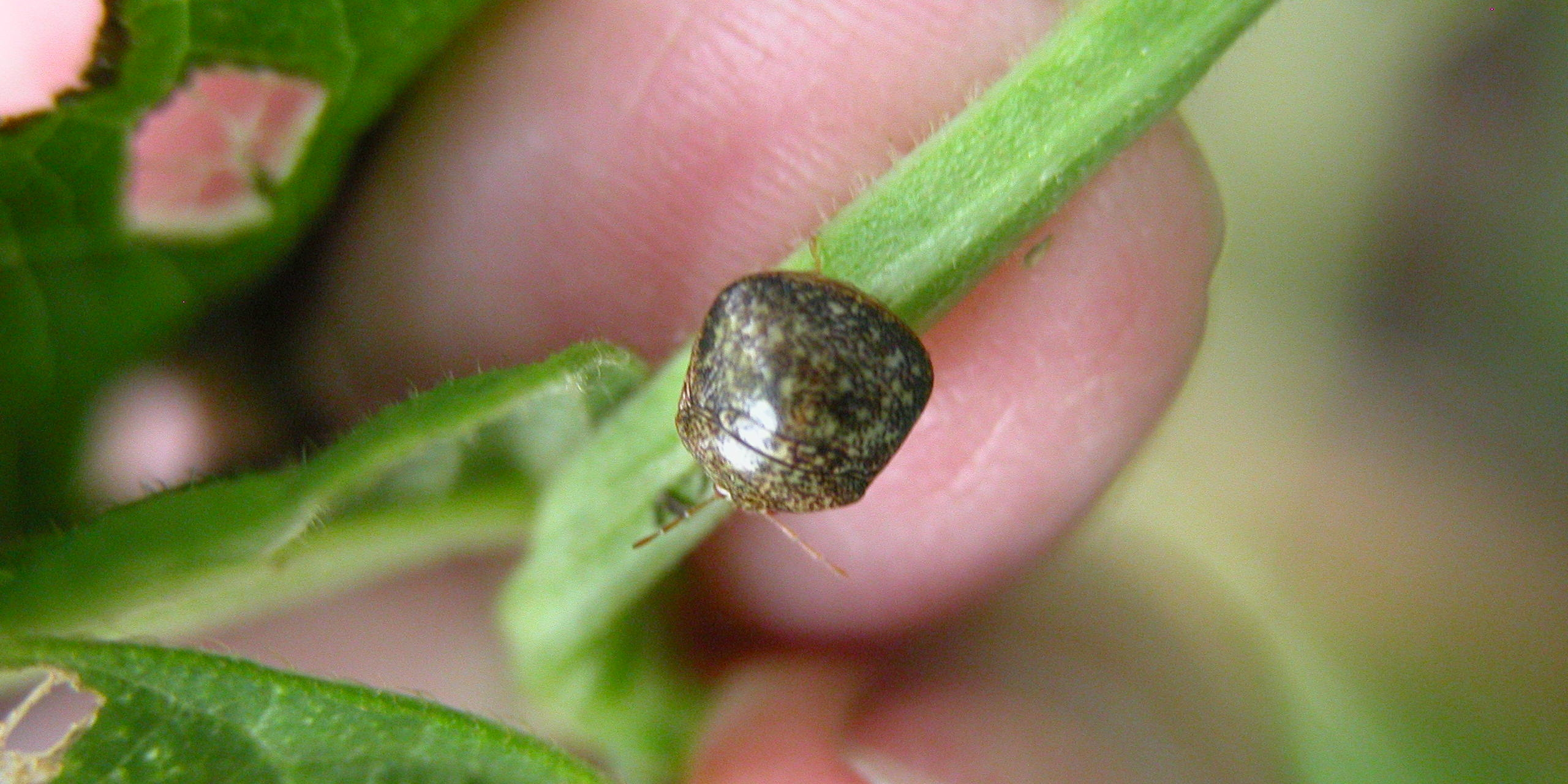Information About Stink Bug Infestation

In October 2009, large aggregations of an insect (M. cribraria) commonly referred to as the kudzu bug, bean plataspid, lablab bug, or globular stink bug, were discovered on the exterior of houses in nine northeast Georgia counties.
By September 2010 the insect was confirmed in more than 60 north and central Georgia counties as well as limited distributions in North and South Carolina. Before discovery in Georgia, M. cribraria was not known to occur in the Western Hemisphere.
M. cribraria adults are 4 to 6 mm long, oblong, olive-green colored with brown speckles, and produce a mildly offensive odor when disturbed. It is related to various species of stink bugs. When discovered in Georgia, the insect was flying from nearby patches of kudzu onto the outside walls of houses and other structures. In its native Asia, one of M. cribraria’s preferred hosts is kudzu, an invasive vine introduced into the U.S. more than 100 years ago as a ground cover to slow soil erosion. Now Kudzu grows unimpeded throughout the southeastern U.S. It appears to be a primary host in North America, and we believe M. cribraria will continue to spread into most areas where kudzu is established.
During the fall season some insect species, triggered by declining temperatures and day lengths, seek secluded sites where they spend the winter months protected from low temperatures. The following spring, as temperatures increase, overwintered insects recover from their winter inactivity to resume their normal life cycle. In Georgia, M. cribraria’s presence was detected for the first time when large numbers exhibited this overwintering behavior in response to declining temperatures in north Georgia. The insects moved from nearby kudzu patches onto the warm, sunlit south and east exposures of nearby homes. They especially gravitated towards light-colored surfaces.
Excluding M. cribraria from entering the home is important. For instance, homeowners should ensure that screening is placed over possible routes of insect entry into the house; that screens on windows are well-seated and without holes; and that soffit, ridge, and gable vents are properly screened. In locations where screening cannot be used, such as around pipe penetrations, steel wool can be stuffed into these openings to prevent the entry of M. cribraria. Lastly, doors should establish a tight seal when closed, and doorsweeps should be installed. To gain relief from invading insects landing on homes, an exterior wall application of an insecticide spray, labeled for nuisance insect control outdoors, may be needed. Unfortunately, re-application(s) may be necessary because kudzu and other surrounding vegetation often remain as a source of re-infestation. To reduce the frequency of re-application, long-lasting formulations such as microencapsulated and wettable powder products should be used if possible.
When using insecticide-based products, always read and follow the directions for use on the product label. Insecticide use for control of M. cribraria indoors is discouraged. Insects that have managed to enter the home should not be crushed, as this action may stain indoor surfaces and/or result in odors that may prove difficult to eliminate. Rather, insects should be vacuumed and the bagged insects then placed in hot, soapy water.
Finally, the control of M. cribraria on structures may prove frustrating for both homeowners and pest management professionals. The overwhelming numbers of insects combined with a nearby source(s) may make sustained control difficult unless the kudzu can be physically removed or killed with an herbicide. Ultimately, the elimination of M. cribraria from homes will require source reducti.
